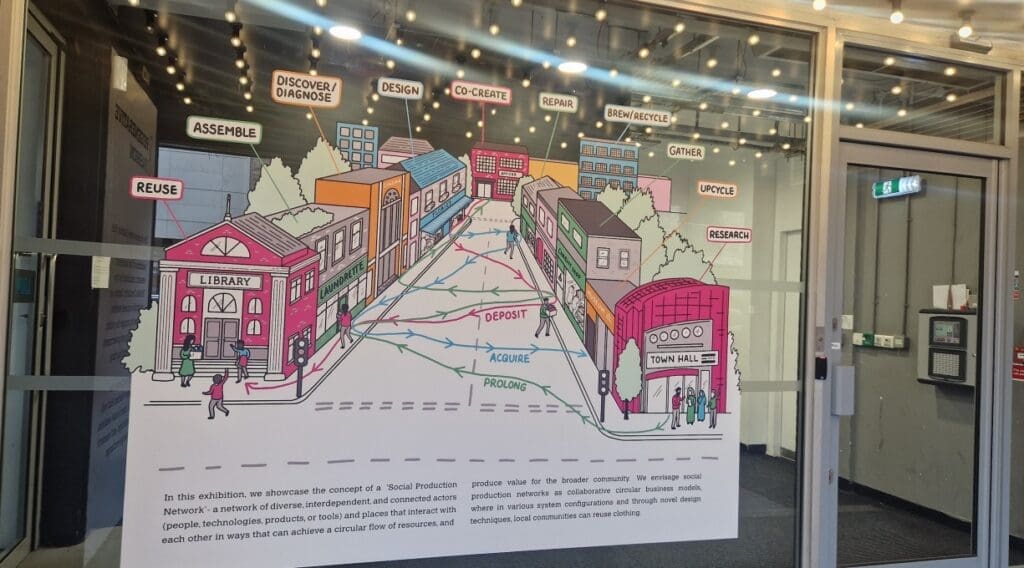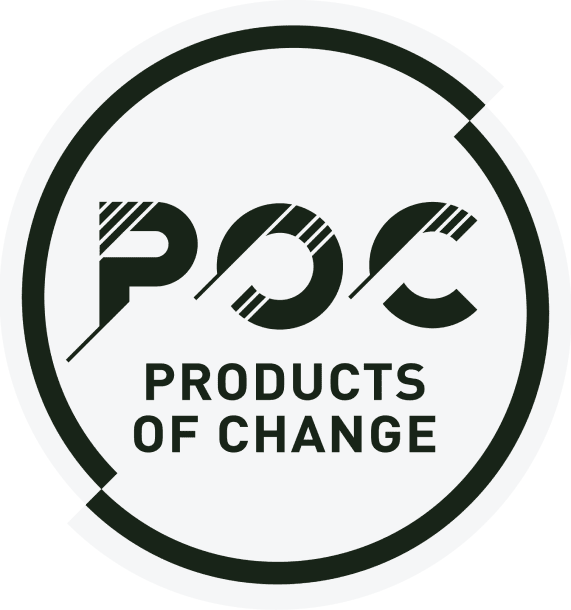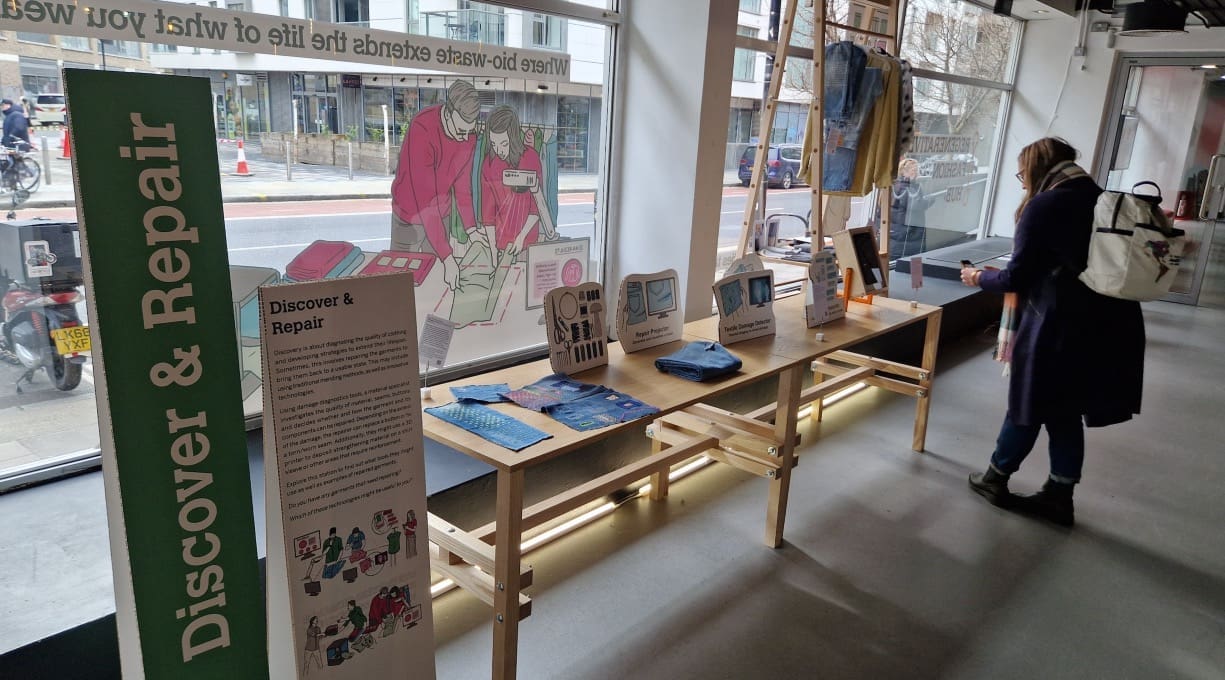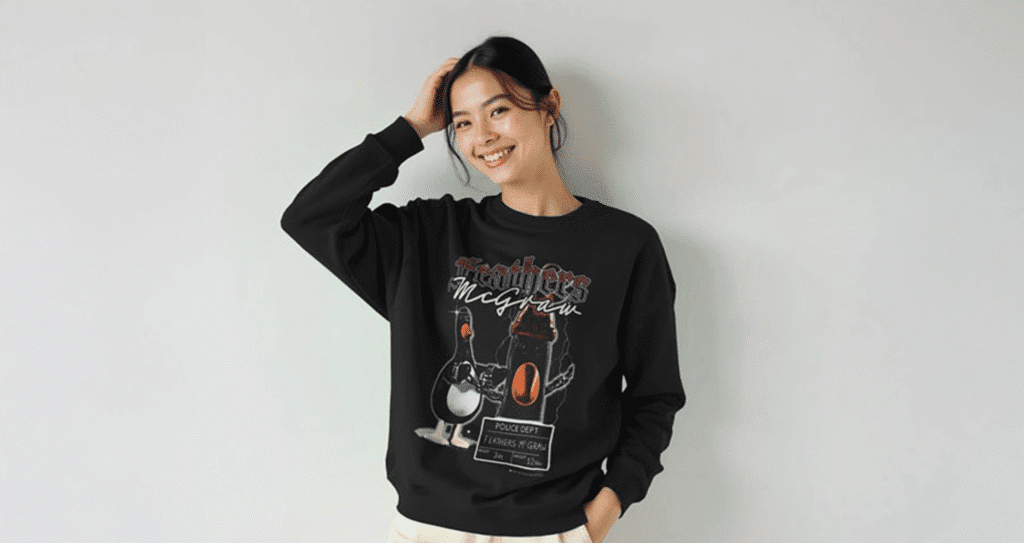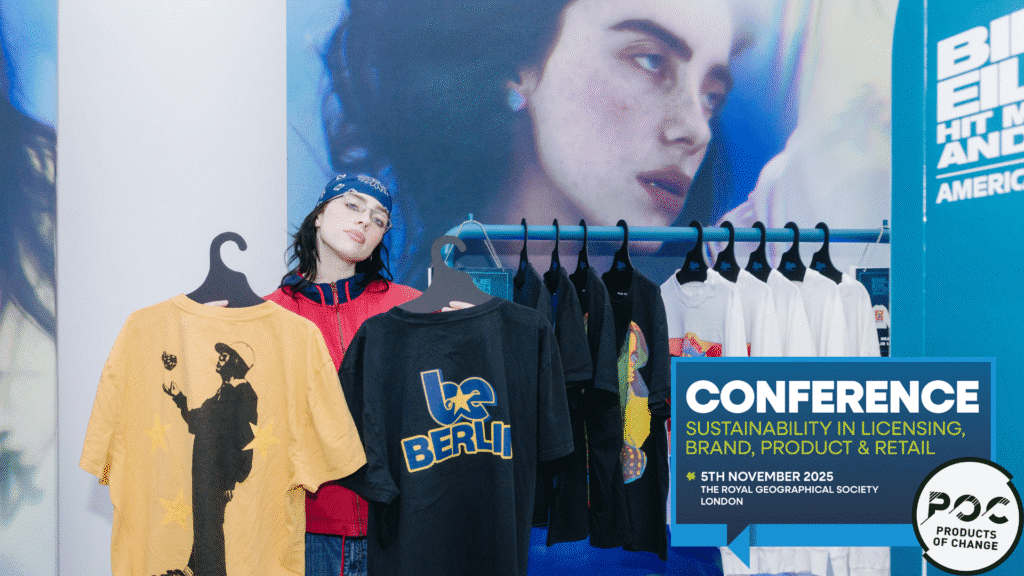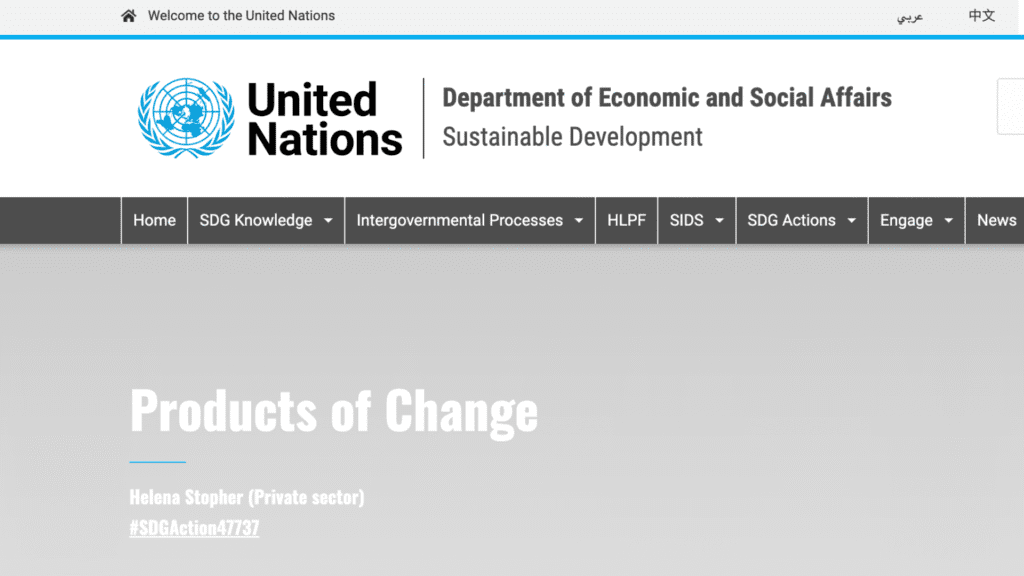Textile libraries and community repair centres; clothing made from bacterial cellulose; and fashion items designed to be disassembled and reassembled with ease. This is the regenerative future of fashion the team at the Textiles Circularity Centre (TCC) envisage. And for the first time, they are sharing it with the public.
For the months of February and March, the Regenerative Fashion Hub has moved into the London Borough of Shoreditch, taking up residence in its community arts centre and exhibition space, Rich Mix to deliver – through technology and interactivity – a future-gazing glimpse at what the world of fashion and textiles could look like.
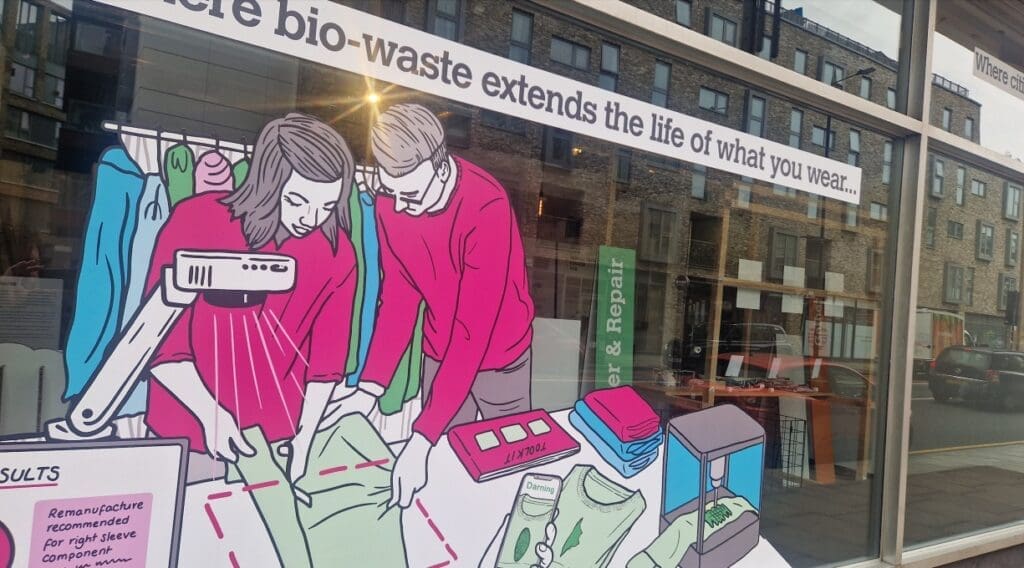
On-site technology allows visitors to step into a virtual world where the air is fresh (thanks to the adapted VR headset featuring scent technology) and where the local textiles and repair library is a hive of community activity as ‘custodians’ (rather than ‘consumers’) mend and repair their worn clothing and textile waste is a thing of the past. This is the vision of the future that the TCC wants to perpetuate.
Bringing the future of fashion to the London public
“As researchers, we can be quite guilty of working in our little siloes but this exhibition is about bringing all that research and innovation and ideation out of our world and into the public eye,” events and impact officer at the UKRI Interdisciplinary Textiles Circularity Centre, Amy Lightfoot told Products of Change.
And it certainly does that. Striking graphics and edgy design bring the Regenerative Fashion Hub to life as the exhibition works to upload a wealth of information – from the ‘collection and sorting’ processes for worn and waste textiles and clothing, through to the modular design of garments for ease of repair and refurbishment. There are activations that imagine a future in which ‘custodians’ engage with intuitive AI chatbots to learn how best to repair their garments. And there are those that explore the concept and use of lab-grown ‘bacterial cellulose’ (made from biomatter and food waste) in the production of yarn and textiles to shift dependency from resource-intensive materials like cotton and nylon.
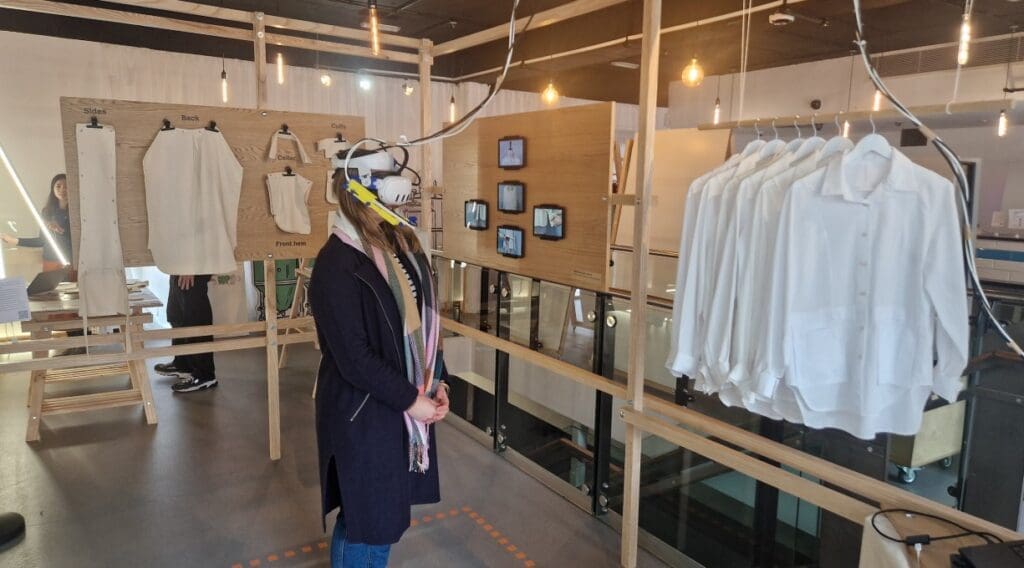
The clever deployment of augmented reality technology mixed with physical samples to observe unpick the complexity of ‘bacterial cellulose’ production wonderfully as visitors are prompted at each stop along the exhibition’s mapped out journey to think about what the future of fashion could look like in their day-to-day lives, nay wardrobes.
However, showcasing their own research isn’t all the TCC is setting out to do here.
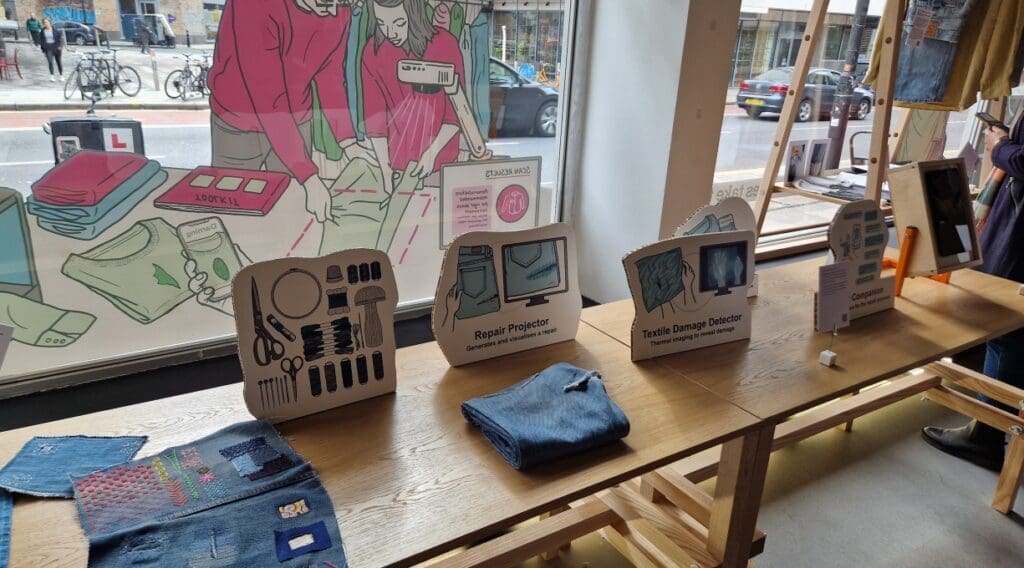
An ideation and research hub sprung from London’s University Royal College of Art, the collective is also here to gather data from the public, measuring reactions to the concepts being presented to get a clearer understanding of how a regenerative future of fashion would sit in the real world.
It’s why, over the course of the next month, the Regenerative Fashion Hub will also be hosting special workshop sessions and panel discussions to drive engagement and interaction around the topic of material innovation, design innovation, and even innovative new approaches to how and where we shop and wear our clothes. Further details about the Textile Circularity Centre’s Regenerative Fashion Hub exhibition can be found here.
